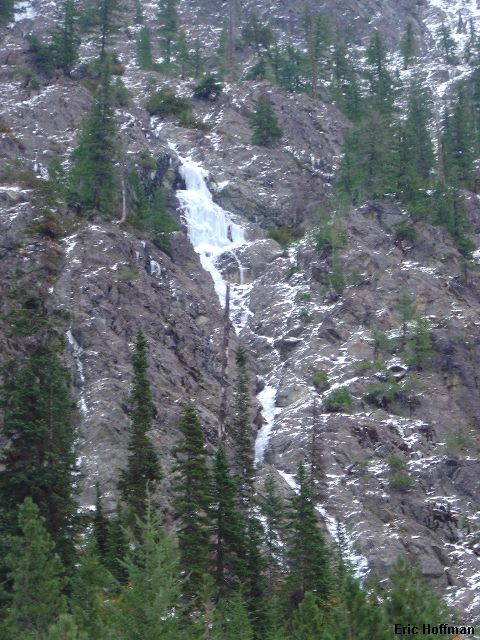A Patch of Ice Hanging Above the Trailhead

|
A Patch of Ice Hanging Above the Trailhead |
|
|
|
Esmeralda Basin and Hawkins Mountain From the Trail to Ingalls Pass |
|
|
|
Mount Stuart from Ingalls Pass |
|
|
|
North and East Ingalls Peaks |
|
|
|
Andy nears "Dogtooth Crags", Ingalls Lake and Mount Stuart in Background |
|
|
|
Andy in the Snow on South Ingalls Peak |
|
|
|
The South Side of North Ingalls Peak |
|
|
The conditions on the North Peak were less than ideal. The cracks were largely filled with snow and ice and the slabs looked treacherous. There wasn't enough snow to turn it into a snow climb. It was going to be a scary mixed climb if we proceeded. We decided to take the consolation prize to the south.
|
Me descending the South Peak |
|
|
References:
Cascade Alpine Guide, Volume 1, 2nd Edition; Fred Beckey; Pages 286-289;
Climbing Washington's Mountains; Jeff Smoot; Pages 185-189